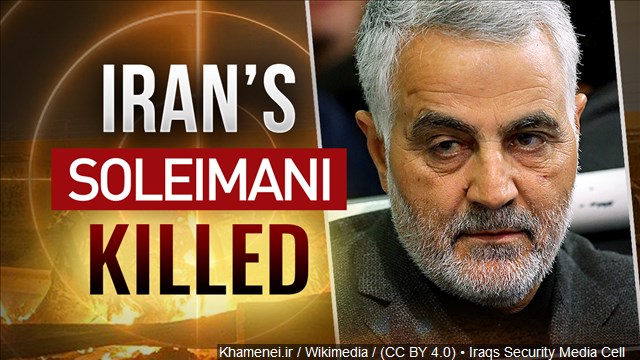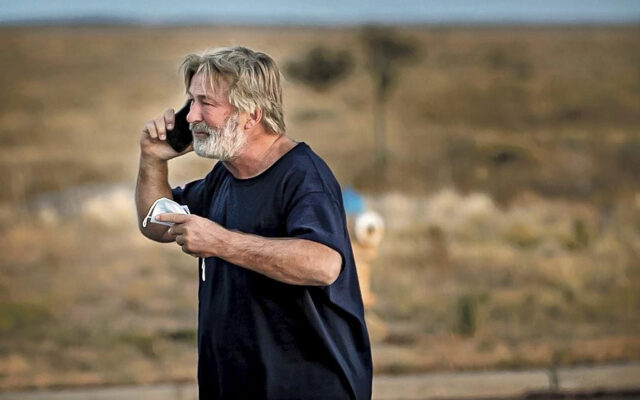Behind The Scenes: Covering The U.S. Assassination In Iraq

By Cooper Banks
The U.S. assassination of a top Iranian military commander at Iraq’s largest airport definitely has me thinking today.
As I look back on it, I’m quite vexed by the way news of the U.S. strike developed late Thursday.
At first, news wire reports (that I watch daily) stated “three Katyusha rockets” were used in “an attack at the Baghdad airport”.
Here’s an excerpt from one Associated Press wire report I read at 3:45 p.m. PST on Thursday;
Baghdad (AP) – Iraqi officials say at least three Katyusha rockets were fired at Baghdad International Airport, causing multiple casualties. Iraq’s Security Media Cell, which releases information regarding Iraqi security, said the rockets landed near the cargo hall Friday. It reported several casualties and said two cars were on fire. It was not immediately clear who fired the rockets or who was targeted…”
Based on that information, CBS News military expert and retired Army Colonel Jeff McCausland speculated about who might have launched the attack, how and why.
McCausland said, “(three Katyusha rockets) means a hit and run type of an attack…”
Colonel McCausland describes a very plausible scenario right there. He also added this;
“Katyusha rockets are very routinely a weapon of choice for various terrorist groups, particularly throughout the Middle East.”
And lastly, McCausland did the best he could to analyze why the attack occured;
“At this moment, it’s a little unclear to me whether this is an escalation of the ongoing crisis between the United States and Iran…Or is this someone else trying to take advantage of the ongoing political chaos in Iraq, potentially ISIS as they try to reinsert themselves (in Iraq)?”
Ok — so, around 4 p.m. PST — We have all this info that suggests some terrorists or unknown paramilitary forces might have launched Katyusha rockets at the Baghdad airport, killing several people. I put that information on the air (it’s all we had).
Then, shortly before 5:20 p.m. PST, we learned who got killed…
BAGHDAD (AP) – Iranian state television and three Iraqi officials say Iranian Gen. Qassim Soleimani has been killed in an airstrike at Baghdad’s international airport. The officials said the strike also killed Abu Mahdi al-Muhandis, the deputy commander of Iranian backed militias known as the Popular Mobilization Forces.
At that moment, I and everyone in the newsroom immediately suspected the U.S. might actually have been behind the attack.
Shortly thereafter, around 6 p.m. PST, Our partners at CBS News as well as the folks at Reuters both reported the U.S. was indeed behind the attack. The AP followed up with confirmation at 7:09 p.m. PST;
BAGHDAD (AP) – The Pentagon says the U.S. military has killed Gen. Qassem Soleimani, the head of Iran’s elite Quds Force, at the direction of President Donald Trump. An airstrike killed Soleimani, architect of Iran’s regional security apparatus, at Baghdad’s international airport Friday, Iranian state television and three Iraqi officials said.
It’s at this point, I became personally quite vexed..because any and all mention of Katyusha rockets and potential ISIS involvement — vanished. This is the AP report from 9:05 p.m. PST.
BAGHDAD (AP) – The United States killed Iran’s top general and the architect of Tehran’s proxy wars in the Middle East in an airstrike at Baghdad’s international airport early on Friday, an attack that threatens to dramatically ratchet up tensions in the region.
Later on Thursday night, I got on the phone with a former colleague of mine. He has a vast array of knowledge about U.S. military matters.
He described to me how U.S. forces may have actually coordinated (presumably with Iraqi paramilitaries) to launch a covert assassination, blaming it on ISIS (and thereby avoiding a potential war with Iran).
(paraphrasing) “Here’s what you do. You paint your targets from a distance and then launch one or two hell-fire missiles from a drone, then you have your Iraqi buddies quickly launch three Katyusha’s at the same area. But you have to time it right. Timing is the key.”
Considering all this, it seems plausible to me.



